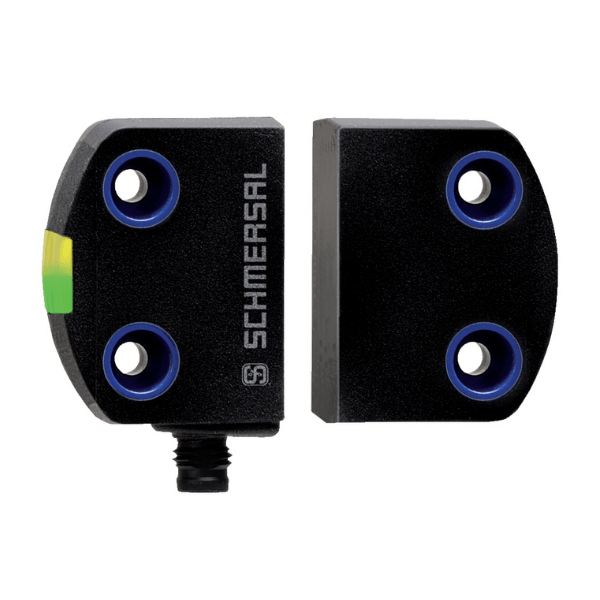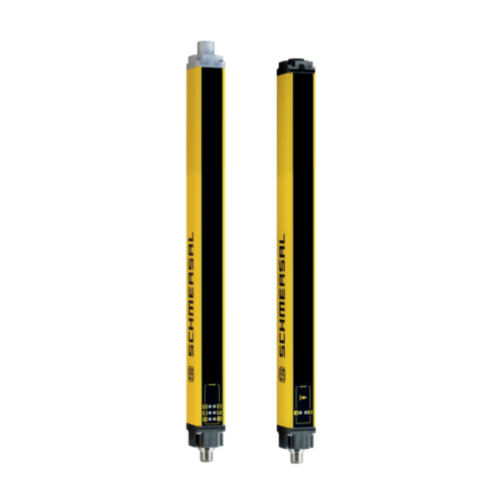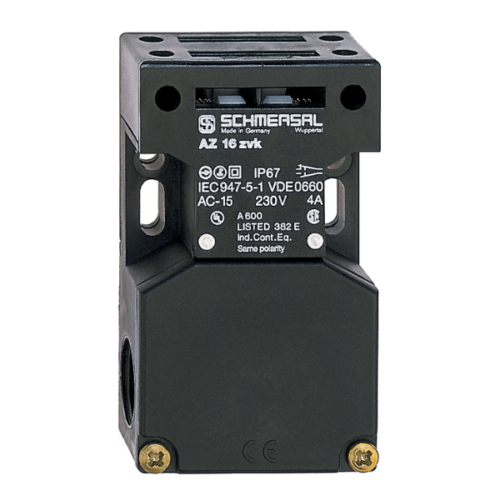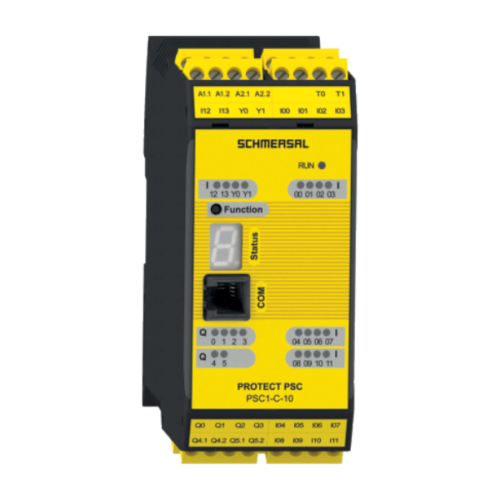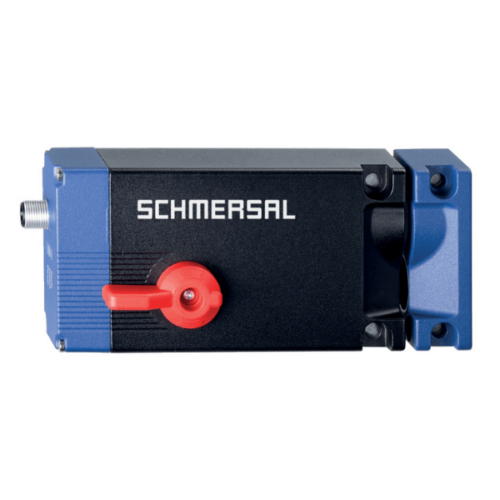RSS260 Safety Sensor
The RSS260 is designed for application in safety circuits monitoring the position of hinged, sliding or removable guards using a specifically coded, passive RFID tag in the actuator.
Radio-frequency identification (RFID) is a technology that uses radio waves to provide a wireless data exchange of a coded identification number between a target (tag, label, or chip) and a reader – a device which transmits an encoded radio signal to the target. Schmersal has applied this technology to the RSS260 series non-contact safety sensor. In this application the RFID actuator target is attached to the safety guard door and sensor is attached to the machine frame. The non-contact sensing allows for longer switch life – Since there are no moving parts there is little to no wear on the components. As safety guard panels age, the sensor will also tolerate misalignments, up to 10 mm.
The clear advantage of using RFID technology is enhanced tamper resistance. Since the RSS260 uses a special frequency, the sensor will disregard non-actuator RFID signals, and the passive RFID tag in the actuator will not interfere with other RFID systems such as product trackers. The RSS260 is also difficult to by-pass because it has the option of individual coding: The basic version of the sensor responds to any RST target actuator; The “I1” version only accepts the coded ID number of the specific target actuator which is taught in during the first start-up; The “I2” version allows the teach-in process to be repeated, allowing replacement of a lost or damaged actuator.

